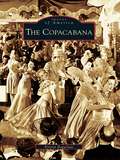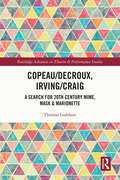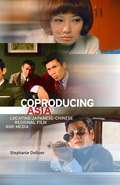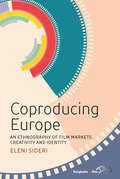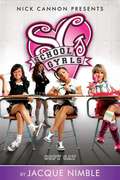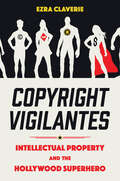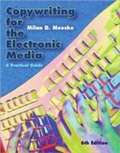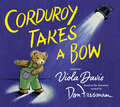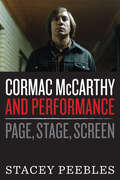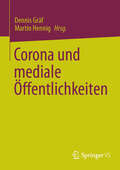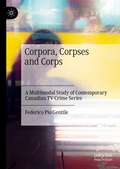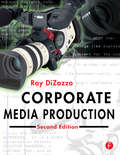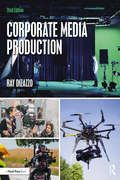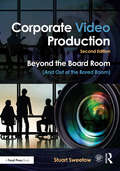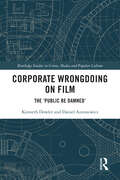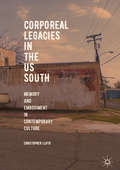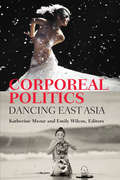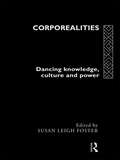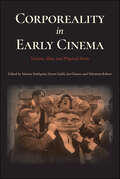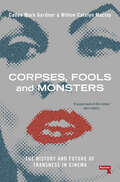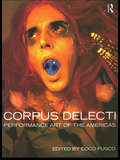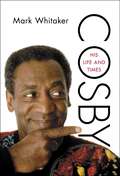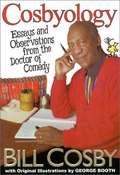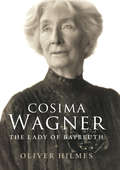- Table View
- List View
Copacabana, The
by Kristin BaggelaarIt has been years since New York has seen anything quite like the old Copacabana. The Copa, Manhattan's best-known night club, was also the most popular nightspot in America. From the moment it burst onto the scene in 1940, an aura of glamour and sophistication hovered over the Copa. It was a luminous glow that, over the course of five decades, served this illustrious establishment well, beckoning the people who made it famous-Hollywood stars, sports heroes, foreign dignitaries, and the town's leading families, including the Kennedys, the Roosevelts, and the Du Ponts. The Copa was a showcase for past, present, and future stars, including Joe E. Lewis, Sophie Tucker, Jimmy Durante, Julie Wilson, Tony Orlando, and Wayne Newton. Through vintage photographs and stories from performers, Copa Girls, and other people connected with the Copa's history, The Copacabana chronicles how this landmark institution became an American cultural icon.
Copeau/Decroux, Irving/Craig: A Search for 20th Century Mime, Mask & Marionette (Routledge Advances in Theatre & Performance Studies)
by Thomas G LeabhartIn this series of essays, Thomas Leabhart presents a thorough overview and analysis of Etienne Decroux’s artistic genealogy. After four years’ apprenticeship with Decroux, Thomas Leabhart began to research and discover how forebears and contemporaries might have influenced Decroux’s project. Decades of digging revealed striking correspondences that often led to adjacent fields—art history, philosophy, and anthropology—forays wherein Leabhart’s appreciation of Decroux and his "kinsfolk," who themselves transgressed traditional frontiers, increased. The following essays, composed over a 30-year period, find a common source in a darkened Prague cinema where people gasped at a wooden doll’s sudden reversal of fortune. These essays: investigate the source of that astonishment; continue Leabhart's examination of Decroux’s "family tree"; consider how Copeau's and Decroux's keen observation of animal movement influenced their actor training; record the challenging and paradoxical improvisations chez Decroux; and recall Decroux’s debt to sculpture, poster art, sport and masks. These essays will be of great interest to students, scholars and practitioners in theatre and performance studies.
Copland: 1900 Through 1942
by Aaron Copland Vivian PerlisThis memoir begins with Copland's Brooklyn childhood and takes us through his years in Paris, the creation of his early works, and his arrival at Tanglewood. Rich with remembrances from Leonard Bernstein, Virgil Thomson, and Nadia Boulanger, as well as a trove of letters, photographs, and scores from Copland's collection.
Coproducing Asia: Locating Japanese–Chinese Regional Film and Media
by Stephanie DeBoerEast Asia largely functions as a single film and media market, but behind it exists a multifaceted world of coproduction crossing linguistic and national borders. In Coproducing Asia, Stephanie DeBoer guides readers through a rich genealogy of regional film and media coproduction, all the while introducing innovative methods for their examination across decades, locations, and scales of production in East Asia and beyond.Beginning with the present and moving back in time, Coproducing Asia paints a picture of the assemblages of coproduction in East Asia and their negotiation of Cold War geopolitics and imperial legacies along with the emergence of China as a global market. Addressing wide-screen international romances of the early 1960s, technology transfers of Cold War action cinema, Sino–Japanese &“friendship&” TV collaborations, Asian omnibus film and video, and more recent China-centered blockbusters, DeBoer deftly contextualizes each case study while accounting for the difficulties involved in the cultural, creative, and industry mediations associated with coproduction. Based on rarely seen archival research as well as interviews with producers in Tokyo, Hong Kong, Taipei, and Shanghai, Coproducing Asia provides compelling frames for understanding the significance of film and media coproduction in East Asia, making clear that it is not only a site of technological transformation but also an arena for competing senses of regional location and place.
Coproducing Europe: An Ethnography of Film-markets, Creativity and Identity
by Eleni SideriUp until the 1990s, when the EU launched film policies intended to encourage political and cultural collaboration among its member states, film production was based on the cultural and national values of individual nations. Coproducing Europe explores the impact of these EU policies on the coproduction networks that now serve as a driving force in contemporary creative economies. By focusing on regional film markets in Thessasloniki, Sarajevo, and Tbilisi, this comparative ethnography looks beyond the economic nature of film coproductions to their role in Europeanisation, memories of the Cold War, and preconstructed political agendas.
Copy Cat (School Gyrls #2)
by Jacque NimbleJacque is struggling with school work. If she doesn't make good grades, she'll have to leave the school -- and her friends!
Copyright Vigilantes: Intellectual Property and the Hollywood Superhero
by Ezra ClaverieCopyright Vigilantes: Intellectual Property and the Hollywood Superhero explains superhero blockbusters as allegories of intellectual property relations. In movies based on characters owned by the comics duopoly of DC and Marvel, no narrative recurs more often than a villain’s attempt to copy the superhero's unique powers. In this volume, author Ezra Claverie explains this fixation as a symptom of the films’ mode of production. Since the 1930s, the dominant American comics publishers have treated the creations of artists and writers as work for hire, such that stories and characters become company property. Thus, publishers avoided sharing the profits both from magazine sales and from licensing characters into other media. For decades, creators have challenged this regime, demanding either shares of profits or outright ownership of their creations. Now that the duopoly rents, licenses, and adapts superheroes for increasingly expensive franchises, and for growing international audiences, any challenge to intellectual property relations threatens a production regime worth billions of dollars. Duopoly movies, therefore, present any attempt to break the superhero’s monopoly on their powers as the scheme of terrorists, mad scientists, or space Nazis—assuaging studio anxieties and revealing the fears of those who benefit most from the real-world ownership of superheroes. Weaving together legal analysis, Marxist political economy, and close readings of movies, Copyright Vigilantes explains the preoccupations of Hollywood’s leading genre.
Copywriting for the Electronic Media: A Practical Guide (6th edition)
by Milan D. MeeskeThis text for undergraduates offers ample copywriting practice with about 80 exercises that sharpen copywriting skills in a variety of venues. Realistic situations typical of entry-level copywriting positions are included. The structure of the text is appropriate for an introduction to writing for electronic media, where many topics are covered, or it can be used to focus on writing for radio and television alone. Along with copywriting materials, the text includes material not always found in texts, such as chapters on copywriting style, consumer behavior, and legal and ethical aspects of copywriting. B&w examples of storyboards and actual aired copy are used extensively. This sixth edition contains new material on getting the first job and the role of the Internet. The grammar review has been expanded and simplified for this edition. Meeske is professor emeritus at the University of Central Florida. Annotation ©2008 Book News, Inc. , Portland, OR (booknews. com)
Corduroy Takes a Bow (Corduroy)
by Viola DavisCelebrate 50 years of America's favorite teddy bear with a brand-new, classically illustrated picture book by Academy Award winner Viola Davis. When Lisa takes Corduroy to the theater for the very first time, it&’s so magnificent and exciting that he just can&’t help heading out on his own to explore. From the orchestra pit to the prop table to the dressing rooms, Corduroy sees it all. Could there be a place for Corduroy on stage, too? Fifty years after this lovable, inquisitive teddy bear was first introduced to readers, he&’s now the star of the show. Author and Audiobook narrator Viola Davis uses her own experience as an Emmy, Tony, and Oscar Award-winning actress to imbue Corduroy&’s adventure with all the magic of the stage. A beautifully illustrated tale with a classic feel, Corduroy Takes a Bow is sure to spark an interest in theater in children of any age.
Cormac McCarthy and Performance: Page, Stage, Screen
by Stacey PeeblesCormac McCarthy is renowned as the author of popular and acclaimed novels such as Blood Meridian, All the Pretty Horses, and The Road. Throughout his career, however, McCarthy has also invested deeply in writing for film and theater, an engagement with other forms of storytelling that is often overlooked. He is the author of five screenplays and two plays, and he has been significantly involved with three of the seven film adaptations of his work. In this book, Stacey Peebles offers the first extensive overview of this relatively unknown aspect of McCarthy&’s writing life, including the ways in which other artists have interpreted his work for the stage and screen. Drawing on many primary sources in McCarthy&’s recently opened archive, as well as interviews, Peebles covers the 1977 televised film The Gardener&’s Son; McCarthy&’s unpublished screenplays from the 1980s that became the foundation for his Border Trilogy novels and No Country for Old Men; various successful and unsuccessful productions of his two plays; and all seven film adaptations of his work, including John Hillcoat&’s The Road (2009) and the Coen brothers&’ Oscar-winning No Country for Old Men (2007). Emerging from this narrative is the central importance of tragedy—the rich and varied portrayals of violence and suffering and the human responses to them—in all of McCarthy&’s work, but especially his writing for theater and film.
Corona und mediale Öffentlichkeiten
by Martin Hennig Dennis GräfDieses Buch bietet einen umfassenden, interdisziplinären Blick auf mediale Erscheinungsformen im Kontext der Corona-Krise und fokussiert in diesem Zusammenhang insbesondere medien- und kommunikationswissenschaftliche, linguistische und philosophische Perspektiven auf die öffentliche Kommunikation zum Themenfeld des Coronavirus. Gerade zu Beginn der Corona-Krise kam es aufgrund der aus der Neuartigkeit des Coronavirus resultierenden Ungewissheit zu signifikanten kommunikativen Störmomenten, deren Rekapitulation und Analyse für eine demokratische Gesellschaft unabdingbar sind. In diesem Sinne forscht dieses Buch nach den kommunikativen Mustern des öffentlichen Sprechens über das Coronavirus in fiktionalen sowie nicht-fiktionalen Formaten.Konkret werden im Rahmen der nicht-fiktionalen Formate TV-Nachrichtensendungen, TV-Talkshows und TV-Dokumentationen, Printnachrichten sowie Social Media-Posts analysiert. Im Rahmen der fiktionalen Formate stehen v.a. Online-Serien im Fokus des Interesses. Die unterschiedlichen, sich aus der Interdisziplinarität des Bandes ergebenden methodischen Zugänge ermöglichen einen breit gefächerten, polyperspektivischen Zugang zur Corona-Kommunikation und lassen gleichwohl (medien-)übergreifende diskursive Muster - als ein signifikantes Ergebnis des Sammelbandes - erkennen.
Corpora, Corpses and Corps: A Multimodal Study of Contemporary Canadian TV Crime Series
by Federico Pio GentileThis book uses corpus and multimodal methods to present a comparative study of three major Canadian TV crime series, Flashpoint (2008-2010), Motive (2013-2015) and 19-2 (2014-2016), paying special attention to cinematic techniques. Following an overview of the methodology and the Canadian cultural milieu of the study, the author approaches the three series as complex cultural and linguistic productions that depend heavily on a national appropriation of a genre whose popularity is growing internationally. The book investigates the verbal, nonverbal and paraverbal strategies employed by each production to create the patterns that make this genre appealing to a variety of audiences, and uncovers some of the psychological processes at work in contemporary Canadian TV crime serials. This book will be of interest to scholars in fields including Corpus Linguistics, Multimodal Studies, Canadian Studies, Media and Communication Studies, and Specialised Discourse.
Corporate Media Production
by Ray DiZazzoWith the advent of affordable equipment, there are more opportunities than ever in the field of corporate media production. This book examines all aspects of this creative field, from concept development to the final stages of postproduction. The book also clarifies the roles of the writer, producer, director and client while focusing on the dynamics among these key players. This in-depth book captures all the technical and creative elements used in the creation of media in the corporate world. The new edition has been updated to reflect the most current media production, editing, delivery formats and processes, with an emphasis on DV. There is material on the new digital video cameras and non-linear editing systems, as well as an expanded discussion of audio sweetening. A new chapter on evaluation demystifies this critical process, and there is a new discussion of multimedia.
Corporate Media Production
by Ray DizazzoThis book offers an in-depth exploration of the exciting field of corporate media production from concept development through to the final stages of postproduction and considers all the technical, interpersonal and creative elements needed for success. This third edition has been updated to reflect both traditional and social media production perspectives, including all phases of research and script development/presentation; essential preproduction activities and production styles; equipment; editing; distribution and evaluation methods; and the role of social media as distribution platforms. Special emphasis is placed on the director’s role and client education and handling. Organized to follow the standard production sequence, Corporate Media Production, Third Edition, will lead students through the entire process in a clear, logical, step-by-step manner. Topics include: Program needs analysis Client interaction Critical judgment and people skills The director’s role Script essentials Dialogue and narration Audio production Editing Social media production and distribution Written in an engaging and easy-to-follow format, this book is a perfect introduction for students wanting to learn the ins and outs of corporate media production.
Corporate Video Production: Beyond the Board Room (And Out of the Bored Room)
by Stuart SweetowIn this updated edition of Corporate Video Production, Stuart Sweetow teaches aspiring and seasoned videographers how to make imaginative corporate videos with eye-catching designs, rhythmic editing tricks, and essential scriptwriting and interview techniques. Readers will learn how to shoot on location or in a studio, work with employees-turned-actors, find new clients, and produce online videos and podcasts for corporations, government agencies, and non-profit organizations. Additionally, this new edition has been updated to include discussion questions, chapter summaries, and professional tips, and to cover live webcasting, mobile devices, shooting in 4K, micro-videos, micro-cameras, and storytelling techniques for corporate social responsibility programs. A companion website features downloadable forms and further resources.
Corporate Wrongdoing on Film: The ‘Public Be Damned’ (Routledge Studies in Crime, Culture and Media)
by Kenneth Dowler Daniel AntonowiczCorporate Wrongdoing on Film: The ‘Public Be Damned’ provides a unique and ground-breaking analysis of corporate wrongdoing depictions, identifying, describing, and categorizing harms perpetrated by corporations. The book provides a history of corporate wrongdoing in film, from the silent film to the present day. Early films are summarized and discussed within the historical, social and political contexts in which they were released. Examining films produced after 1979, the book classifies them by corporate harms to the environment, workers, consumers, and the economy. The book includes a discussion of well over 100 films, from obscure television movies to Hollywood blockbusters. Finally, the book concludes with a narrative analysis exploring the depiction of the protagonists, antagonists, and victims within the corporate wrongdoing film. Detailed and accessible, Corporate Wrongdoing on Film: The ‘Public Be Damned’ will be of great interest to scholars and students of Criminology and Film and Media Studies.
Corporeal Legacies in the US South: Memory And Embodiment In Contemporary Culture
by Christopher LloydThis book examines the ways in which the histories of racial violence, from slavery onwards, are manifest in representations of the body in twenty-first-century culture set in the US South. Christopher Lloyd focuses on corporeality in literature and film to detail the workings of cultural memory in the present. Drawing on the fields of Southern Studies, Memory Studies and Black Studies, the book also engages psychoanalysis, Animal Studies and posthumanism to revitalize questions of the racialized body. Lloyd traces corporeal legacies in the US South through novels by Jesmyn Ward, Kathryn Stockett and others, alongside film and television such as Beasts of the Southern Wild and The Walking Dead. In all, the book explores the ways in which bodies in contemporary southern culture bear the traces of racial regulation and injury.
Corporeal Politics: Dancing East Asia (Studies in Dance History Series)
by Emily Wilcox Katherine MezurIn Corporeal Politics, leading international scholars investigate the development of dance as a deeply meaningful and complex cultural practice across time, placing special focus on the intertwining of East Asia dance and politics and the role of dance as a medium of transcultural interaction and communication across borders. Countering common narratives of dance history that emphasize the US and Europe as centers of origin and innovation, the expansive creativity of dance artists in East Asia asserts its importance as a site of critical theorization and reflection on global artistic developments in the performing arts. Through the lens of "corporeal politics"—the close attention to bodily acts in specific cultural contexts—each study in this book challenges existing dance and theater histories to re-investigate the performer's role in devising the politics and aesthetics of their performance, as well as the multidimensional impact of their lives and artistic works. Corporeal Politics addresses a wide range of performance styles and genres, including dances produced for the concert stage, as well as those presented in popular entertainments, private performance spaces, and street protests.
Corporealities: Dancing Knowledge, Culture and Power
by Susan Leigh FosterFirst published in 1995. Routledge is an imprint of Taylor & Francis, an informa company.
Corporeality in Early Cinema: Viscera, Skin, and Physical Form (Early Cinema in Review)
by Edited by Marina Dahlquist, Doron Galili, Jan Olsson and Valentine RobertCorporeality in Early Cinema inspires a heightened awareness of the ways in which early film culture, and screen praxes overall are inherently embodied. Contributors argue that on- and offscreen (and in affiliated media and technological constellations), the body consists of flesh and nerves and is not just an abstract spectator or statistical audience entity.Audience responses from arousal to disgust, from identification to detachment, offer us a means to understand what spectators have always taken away from their cinematic experience. Through theoretical approaches and case studies, scholars offer a variety of models for stimulating historical research on corporeality and cinema by exploring the matrix of screened bodies, machine-made scaffolding, and their connections to the physical bodies in front of the screen.
Corpses, Fools and Monsters: The History and Future of Transness in Cinema
by Willow Maclay Caden GardnerA radical history of transness in cinema, and an exploration of the political possibilities of its future.In the history of cinema, trans people are usually murdered, made into a joke, or viewed as threats to the normal order — relegated to a lost highway of corpses, fools, and monsters.In this book, trans film critics Caden Mark Gardner and Willow Catelyn Maclay take the reader on a drive down this lost highway, exploring the way that trans people and transness have evolved on-screen.Starting from the very earliest representations of transness in silent film, through to the multiplex-conquering Matrix franchise and on to the emergence of a true trans-authored cinema, Corpses, Fools and Monsters spans everything from musicals to body horror to avant garde experimental film to tell the story of the trans film image. In doing so, the authors investigate the wider history of trans representation — an exhilarating journey of compromise, recuperation, and potential liberation that they argue is only just the beginning.
Corpus Delecti: Performance Art of the Americas
by Coco FuscoThe most comprehensive volume on performance art from the Americas to have appeared in English, Corpus Delecti is a unique collection of historical and critical studies of contemporary Latin performance. Drawing on live art from the 1960s to the present day, these fascinating essays explore the impact of Latin American politics, popular culture and syncretic religions on Latin performance.Including contributions by artists as well as scholars, Fusco's collection bridges the theory/practice divide and discusses a wide variety of genres. Among them are:* body art* carpa* vaudeville* staged political protest* tropicalist musical comedies* contemporary Venezuelan performance art* the Chicano Art movement* queer Latino performanceThe essays demonstrate how specific social and historical contexts have shaped Latin American performance. They also show how those factors have affected the choices artists make, and how their work draw upon and respond to their environment.
Cosby: His Life and Times
by Mark WhitakerThe first major biography of an American icon, comedian Bill Cosby. Based on extensive research and in-depth interviews with Cosby and more than sixty of his closest friends and associates, it is a frank, fun and fascinating account of his life and historic legacy.Far from the gentle worlds of his routines or TV shows, Cosby grew up in a Philadelphia housing project, the son of an alcoholic, largely absent father and a loving but overworked mother. With novelistic detail, award winning journalist Mark Whitaker tells the story of how, after dropping out of high school, Cosby turned his life around by joining the Navy, talking his way into college, and seizing his first breaks as a stand-up comedian. Published on the 30th anniversary of The Cosby Show, the book reveals the behind-the-scenes story of that groundbreaking sitcom as well as Cosby's bestselling albums, breakout role on I Spy, and pioneering place in children's TV. But it also deals with professional setbacks and personal dramas, from an affair that sparked public scandal to the murder of his only son, and the private influence of his wife of fifty years, Camille Cosby. Whitaker explores the roots of Cosby's controversial stands on race, as well as "the Cosby effect" that helped pave the way for a black president. For any fan of Bill Cosby's work, and any student of American television, comedy, or social history, Cosby: His Life and Times is an essential read.
Cosima Wagner: The Lady of Bayreuth
by Oliver HilmesIn this meticulously researched book, Oliver Hilmes paints a fascinating and revealing picture of the extraordinary Cosima Wagner--illegitimate daughter of Franz Liszt, wife of the conductor Hans von Bülow, then mistress and subsequently wife of Richard Wagner. After Wagner's death in 1883 Cosima played a crucial role in the promulgation and politicization of his works, assuming control of the Bayreuth Festival and transforming it into a shrine to German nationalism. The High Priestess of the Wagnerian cult, Cosima lived on for almost fifty years, crafting the image of Richard Wagner through her organizational ability and ideological tenacity. The first book to make use of the available documentation at Bayreuth, this biography explores the achievements of this remarkable and obsessive woman while illuminating a still-hidden chapter of European cultural history.
